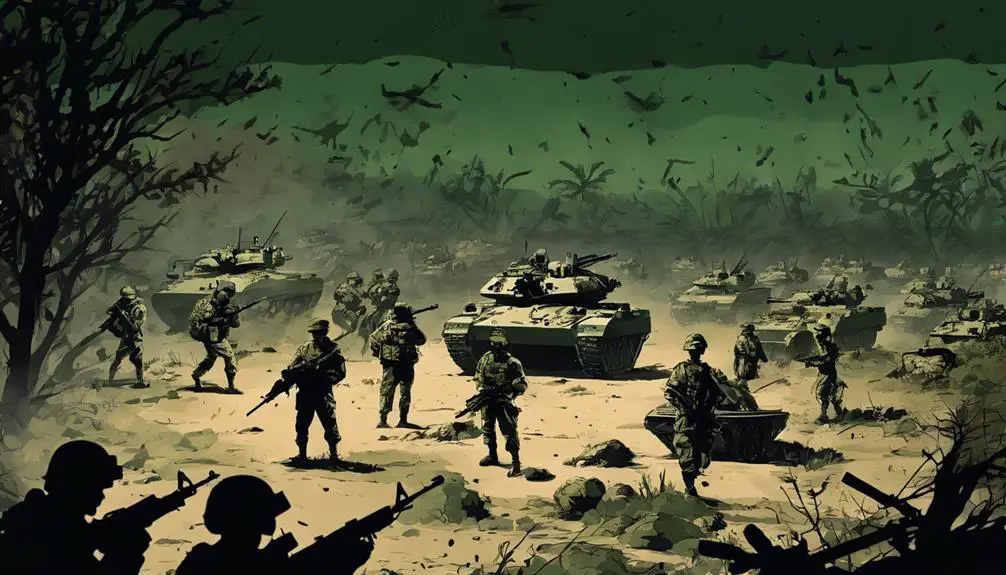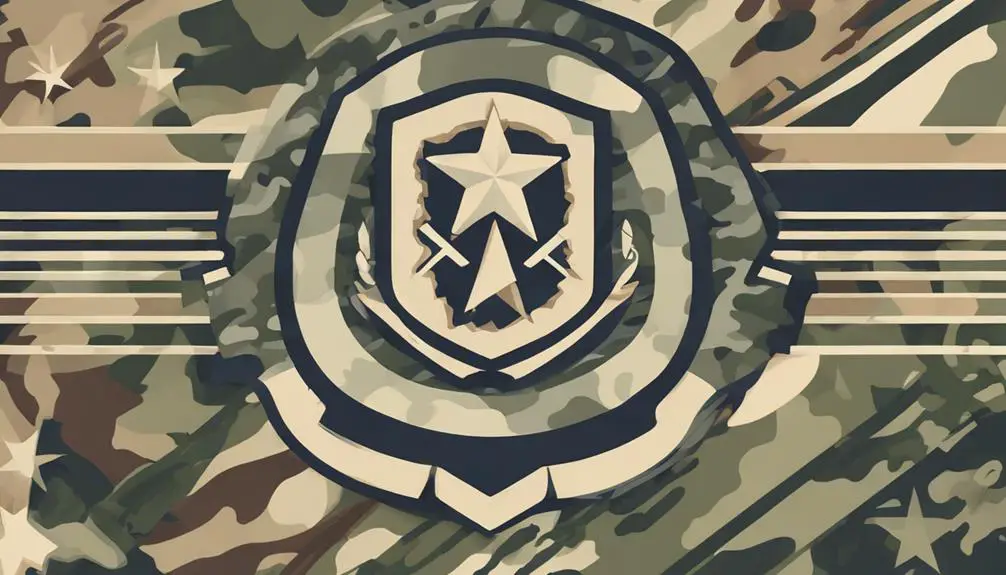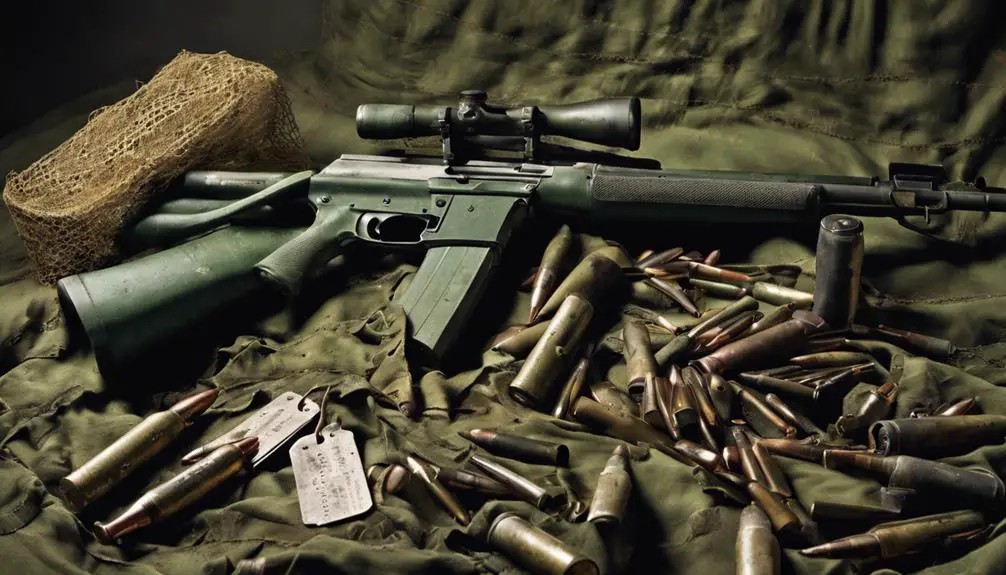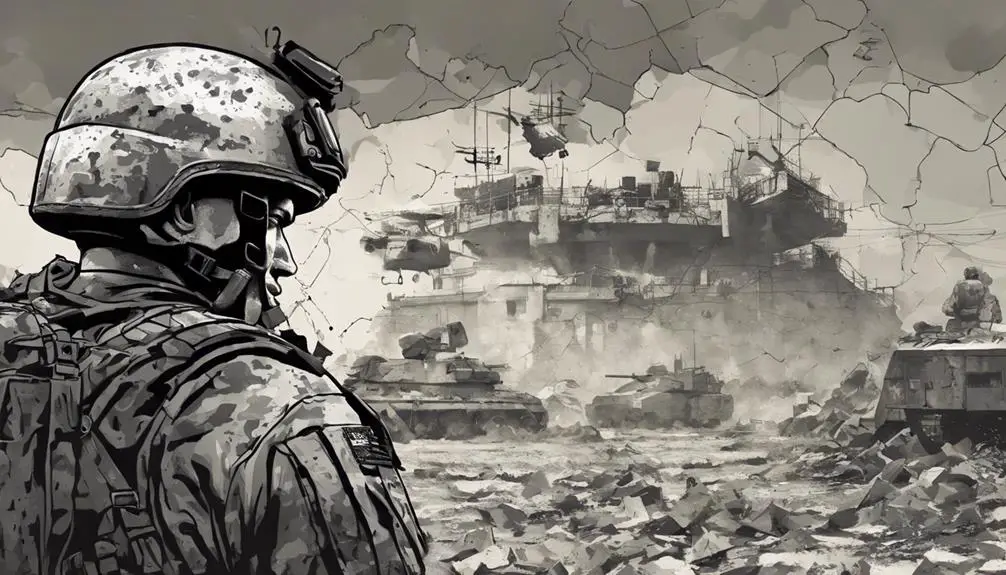You're about to enter a world of secretive communication and camaraderie – the domain of 00 00 military slang. This unique language has evolved over centuries, blending cultural influences and wartime necessity. You'll discover how military slang enhances operational effectiveness, fosters trust, and strengthens bonds within the community. From basic training lingo to tactical operations terms, phonetic alphabets, and slang for ranks, each aspect plays a crucial role in shaping military identity. As you explore this cryptic language, you'll uncover the significance of code names, nicknames, and colloquialisms that define the military experience. Prepare to crack the code.
Origins of Military Slang

Military slang has its roots in the early days of warfare, when soldiers and sailors used colloquialisms to quickly communicate complex ideas and maintain secrecy in the heat of battle.
You might be surprised to learn that military slang has a rich historical background, shaped by the cultural influences of the time. In the 17th and 18th centuries, British sailors and soldiers adopted colloquialisms from various cultures, creating a unique language that was both functional and secretive.
This linguistic blend of British, African, and indigenous influences formed the foundation of modern military slang. As wars raged on, military slang continued to evolve, absorbing words and phrases from different cultures and languages.
You'll find that military slang often reflects the cultural dynamics of the time, making it a fascinating reflection of history. By understanding the historical roots of military slang, you'll gain insight into the cultural influences that shaped this unique language.
Basic Training Lingo
As you enter the world of military service, you'll quickly discover that basic training lingo is designed to strip away civilian habits and forge a new identity, one that's rooted in discipline, camaraderie, and a unique language all its own.
In Boot Camp, you'll encounter a Drill Instructor (DI) who will guide you through the transformation process. They'll use specific terms to make sure you understand what's expected of you. For instance, 'Drop and give me 20' means you need to do 20 push-ups on the spot. 'Chow time' signals mealtime, and 'Rack time' means it's time for sleep.
Here are some essential basic training terms to get you started:
| Term | Meaning |
|---|---|
| 'Hooah' | Expression of enthusiasm or agreement |
| 'O-dark-thirty' | Very early morning hours |
| 'Ruck' | Backpack or marching with a heavy pack |
| 'Sandbox' | Military training area or deployment zone |
Tactical Operations Terms

You'll frequently encounter tactical operations terms during your military service, which are essential for effective communication and mission success. Understanding these terms will help you navigate complex operations and stay on the same page with your team.
COIN (Counterinsurgency) tactics, for instance, involve a range of strategies to counter insurgent activities, from intelligence gathering to population-centric operations. Familiarizing yourself with COIN tactics will enable you to contribute to mission planning and execution.
Fireteam formations are another critical aspect of tactical operations. You'll need to understand different formations, such as the wedge, file, or line formation, to effectively maneuver on the battlefield. These formations are designed to provide maximum firepower and protection while executing various tasks, from patrolling to room clearing.
Radio Communication Codes
When communicating on the battlefield, you'll rely on radio communication codes to convey critical information quickly and accurately, making them an essential component of tactical operations. These codes are designed to guarantee clear and concise communication, reducing the risk of misinterpretation or confusion.
One key aspect of radio communication codes is the use of Phonetic Alphabets, which replace letters with code words to clearly communicate letters and numbers. For example, 'A' becomes 'Alpha,' 'B' becomes 'Bravo,' and so on. This system helps prevent mistakes caused by similar-sounding letters or poor radio reception.
In addition to Phonetic Alphabets, you'll also use Proword Messages to convey specific information. Proword Messages are standardized phrases used to convey common messages, such as 'Proword 13' for 'Requesting artillery fire' or 'Proword 21' for 'Enemy position.' These codes help you quickly and accurately communicate critical information, allowing you to respond quickly to changing situations on the battlefield.
Slang for Military Ranks

In the military, you'll often hear fellow soldiers using slang terms to refer to ranks, such as 'Butterbar' for a Second Lieutenant or 'E-7' for a Sergeant First Class. This lingo is used to quickly and informally identify an individual's rank, and it's an integral part of military culture.
Here are a few examples of Officer lingo and Enlisted slang for ranks:
- Butterbar: Second Lieutenant (due to the gold bar insignia on their uniform)
- E-7: Sergeant First Class (referring to the pay grade)
- O-3: Captain (using the military's rank classification system)
Using these slang terms helps to build camaraderie and creates a sense of belonging among soldiers. It's essential to learn these terms to communicate effectively and avoid confusion.
Code Names and Nicknames
During military operations, code names and nicknames are used to conceal identities, convey complex information quickly, and add a layer of security to communication.
You've probably heard of Operation Desert Storm or Operation Enduring Freedom – these are examples of operation titles that were used to identify specific military operations. These code names are often chosen to be memorable and easy to understand, but not so revealing that they compromise the mission.
In addition to operation titles, historical aliases have been used to refer to people, places, and things. For instance, during World War II, the Allies referred to the Japanese city of Hiroshima as 'Little Boy.' These nicknames are often used to simplify complex information and make it easier to communicate quickly.
You might hear a soldier refer to a fellow soldier as 'Hawk' or a specific vehicle as 'Ghost Rider.' These code names and nicknames are an integral part of military communication, allowing soldiers to convey important information quickly and efficiently while maintaining operational security.
Military Jargon for Weapons

You've likely heard military personnel tossing around terms like 'Saw' for an M249 squad automatic weapon or 'Fifty-Cal' for a .50-caliber sniper rifle, demonstrating how military jargon for weapons enables efficient communication on the battlefield. These nicknames are more than just colloquialisms – they're essential for swift and accurate communication in high-pressure situations.
Here are a few examples of weapon nicknames you might hear:
- M4A1 Carbine: often referred to as the 'M4' or simply 'carbine'
- M2 Browning: nicknamed the 'Fifty-Cal' due to its .50-caliber rounds
- M67 Fragmentation Grenade: commonly called a 'baseball' due to its size and shape
It's worth noting that some gun myths have been debunked, such as the idea that a .50-caliber sniper rifle can take down a helicopter. While these myths might make for exciting action movies, they're far from reality. Understanding the language and capabilities of various weapons is essential for effective communication and successful missions.
Colloquialisms for Combat Zones
As you patrol through hostile territories, you'll hear combat veterans using colloquialisms to describe combat zones, which enables them to swiftly convey vital information about the terrain, enemy positions, and potential threats.
These colloquialisms, often rooted in combat phrases and war clichés, have become an integral part of military communication. You might hear phrases like 'Indian Country' to describe hostile territory or 'Ambush Alley' to warn of a potential threat.
Veterans might use 'RPG Alley' to describe a narrow passage vulnerable to rocket-propelled grenade attacks. These colloquialisms serve as a shorthand, allowing soldiers to quickly assess and respond to their surroundings.
By using these combat phrases, soldiers can efficiently convey complex information, enabling them to react swiftly and make informed decisions in high-pressure situations.
Familiarizing yourself with these colloquialisms is essential for effective communication and situational awareness in combat zones.
Frequently Asked Questions
Can Civilians Use Military Slang in Everyday Conversation?
You might wonder, can you use specialized slang in everyday conversation? Without the context of military slang, the answer lies in authenticity issues.
Using language that's not part of your cultural heritage can raise cultural appropriation concerns. Consider social norms and language barriers in your workplace or social circle.
Before adopting new lingo, make sure it won't alienate others or hinder workplace integration. Be mindful of your audience and adjust your language to avoid misunderstandings.
Are There Differences in Slang Between Military Branches?
Imagine you're at a BBQ, chatting with friends from different walks of life. You notice that your Army buddy says 'HOOAH' to express excitement, while your Navy friend says 'Anchors Aweigh' to bid farewell.
You wonder, are there differences in slang between military branches? Yes, there are. Branch variations exist, with each service having its unique idioms. For instance, the Air Force uses 'Bingo' to indicate low fuel, while the Marines use 'Oorah' to express enthusiasm.
Service idioms reflect each branch's distinct culture and history.
Is Military Slang Used in International Military Coalitions?
When working in international military coalitions, you'll encounter cultural barriers that can hinder effective communication. Coalition communication is vital, but language differences and cultural nuances can lead to misunderstandings.
You'll find that military personnel from different countries often develop their own slang to facilitate communication, bridging cultural gaps. However, this slang may not always translate across borders.
How Does Military Slang Change Over Time and With Technology?
As you explore the ever-changing landscape of language, you'll find that slang evolves rapidly, influenced by technological advancements.
The digital evolution has brought about a new wave of techno talk, where abbreviations and acronyms dominate communication.
You'll notice that terms born from necessity, like 'FYI' and 'BRB,' have become an integral part of our online vocabulary.
Similarly, military slang adapts to new tech, incorporating buzzwords and shorthand to stay efficient and secure in high-stakes operations.
Are There Any Negative Consequences of Using Military Slang?
When you use specialized language, including military slang, you risk creating barriers with outsiders. This can lead to alienation from those who don't understand the lingo, making it harder to communicate effectively.
Additionally, using language that's unique to a particular group can perpetuate stigma, reinforcing 'us versus them' mentalities. As a result, you might inadvertently create divisions, rather than building bridges.
Conclusion
As you navigate the world of military slang, remember that every term, code, and nickname serves a purpose. Like a well-oiled machine, each component works together to guarantee seamless communication and swift action.
From basic training to tactical ops, every phrase and code is a crucial cog in the military machine. By speaking the language, you're not just talking the talk – you're walking the walk, side by side with those who serve.







